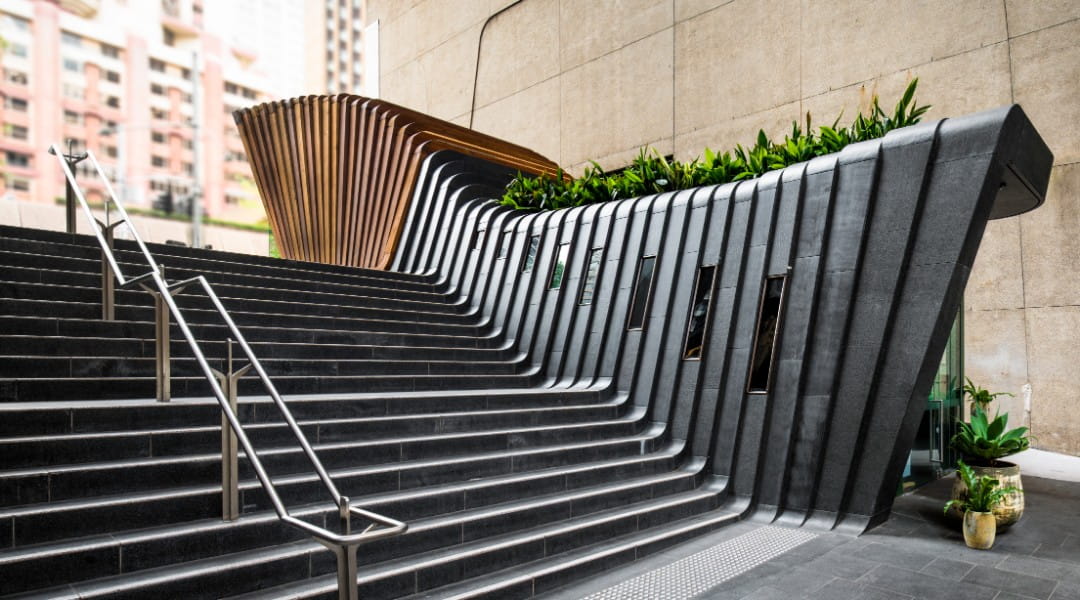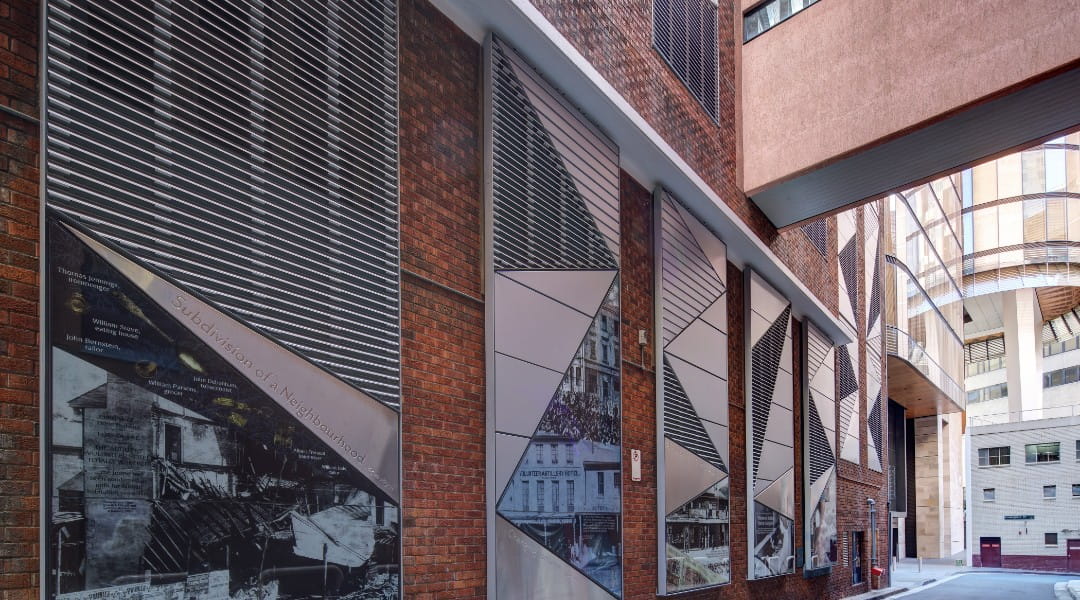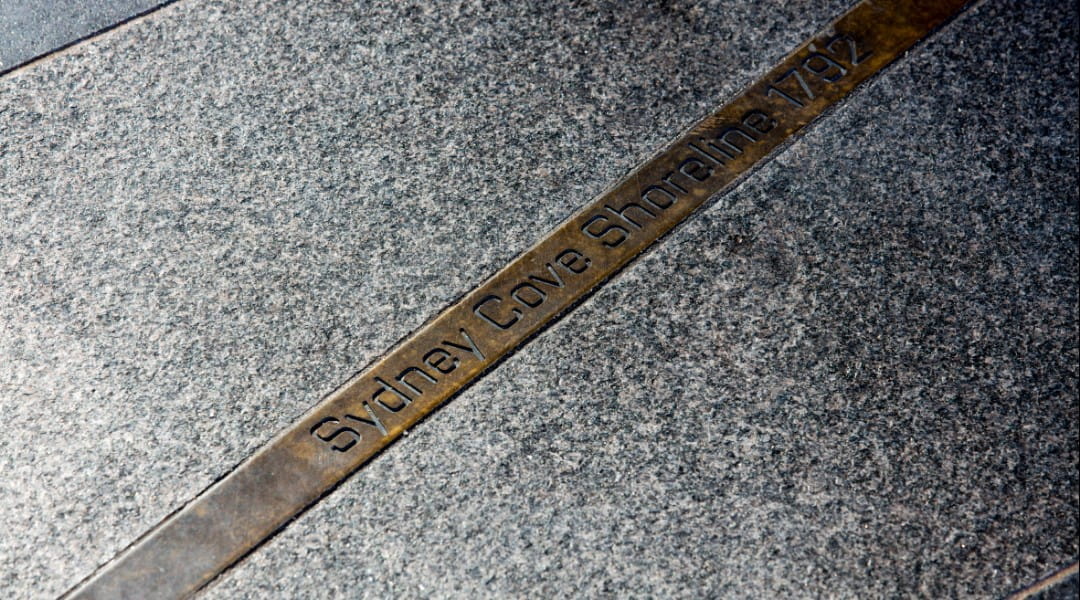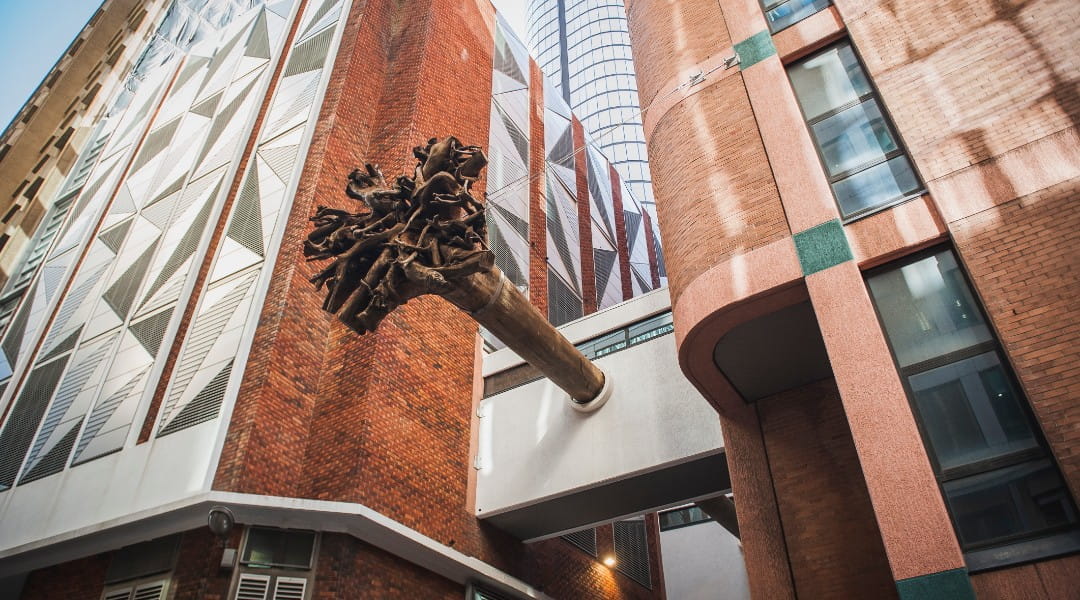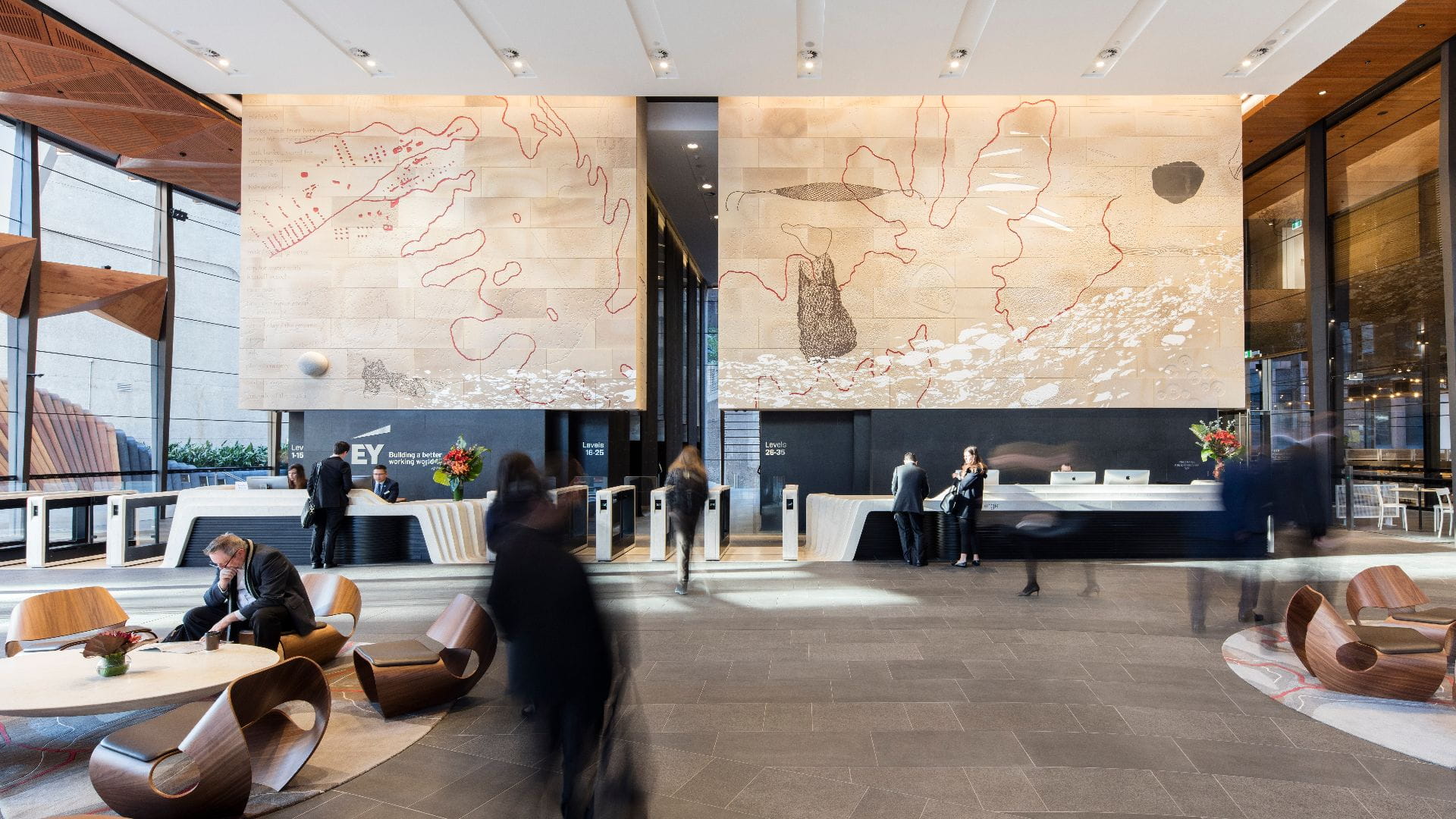
Public Art
The Artwork of EY Centre, 200 George Street
EY Centre, 200 George Street includes a number of artworks that can be enjoyed by the building customers, visitors and wider public.
ngarunga nangama : calm water dream by Judy Watson
The site connects with the history of the Tank Stream which runs parallel with George and Pitt Streets. My mother’s family are from the Waanyi Aboriginal language group of North West Queensland, known as ‘running water’ people. I have always been interested in bodies of water and their connection to Country. When I heard about the Sydney tank stream in connection with this site, I was immediately swimming through the space in my imagination. I researched and used the earliest images of this stream and Warrane (Warrang/Sydney Cove/Port Jackson), in the local Aboriginal (Gadigal) language. Some of the early maps of this place have been incised into the sandstone walls, infilled with red ochre and overlaid with imagery of washes, suggesting water.
-
Read More
There are Gadigal and English words, and objects that are part of the history of Sydney, some of which have been excavated from the two wells that were beneath the ground at this site. There are lines of shells. These speak of the extensive Aboriginal shell middens which were collected by early colonists, and burnt for their lime which went into the mortar of the first stone buildings in Sydney. Some of this shell mortar is still evident around the Rocks, so Aboriginal culture is literally within the walls of the early architecture. I imagine all the shellfish that have been collected and swallowed and sense that when I go into one of these spaces, I too am swallowing culture. The theme of water continues throughout the space and into the night as the gobo lighting comes into play. When the light outside begins to fade there is a living water element floating through the space as light moves across the surface of the sandstone walls. It is a reflection of the water that lies beneath the ground, that connects all of us to this place. Some of the objects engraved within the sandstone are Bara, Aboriginal shell hooks, made from turbine shells, used for fishing. There is a large, round, granite form protruding from the wall that references a sizeable granite stone that was found in the tank stream. It is not conclusively known whether it is an Aboriginal stone pounder or a non – Aboriginal object that might have been used as a stopper. As there is no granite close by, so this large granite stone was transported here from elsewhere. Other objects referenced include Aboriginal Queen Cora Gooseberry’s breast plate. There are also images of Aboriginal dilly bags, necklaces and spear heads from Port Jackson that are now in the collection of the British Museum. I see the incorporation of these elements as a form of cultural retrieval. From the Chinese well I have included images of the I-ching and pottery shards. The ceramic shapes run in a line down the left side of the inner wall leading to the corridor containing the lifts on the Western Elevation. They resemble observations of the moon calendar. On the right side of the inner wall are a scattering of objects found in the second well from the site.
I want people to feel a connection to history and memory and awash with the water of the tank stream.
Please click here to read more on the artist rationale, concept detail and artwork application for NGARUNGA NANGAMA : calm water dream by Judy Watson.
Artefact Display in Crane Place Stairs, Heritage Interpretation
Over 23,000 artefacts were uncovered in the excavation of the site.
The most interesting and significant of these artefacts are showcased in display boxes integrated within the fluid architecture of the Crane Place staircase.
READ MOREDalley Street Panels, Heritage Interpretation
Maps and images of the site’s history are displayed along the Underwood Street laneway of the adjacent 4 Dalley Street building.
These panels document the history of the site in chronological order.
Harbour Foreshore Line, Heritage Interpretation
The site was once on the Sydney harbour foreshore.
As a celebration of this, a bronze strip has been inlayed into the paving of the ground floor lobby and public domain.
The building tenants, visitors and public can track this line as it traverses the site to see where the harbour foreshore line once was.
Underwood Ark By Michael Mcintyre
This majestic Blackbutt tree (Eucalyptus pilularis), native to the Sydney region and south-eastern Australia, is a symbol and a reminder of the extensive environmental and social change that has taken place across this country and an acknowledgment of the Gadigal people of the Eora Nation, the traditional and current custodians of this land.
Between 4,000 and 8,000 Gadigal people, from as many as 29 different clans, inhabited the land in the Sydney region at the time of British arrival in 1788. This area was covered in mangroves, grassland and forest –abundant in plant and animal life. Within months of the British invasion, much of the native flora and fauna was cleared, the freshwater streams became polluted and the Aboriginal population was displaced.
Underwood Ark calls us to contemplate the magnificence and fragility of nature, and asks us to reflect on our connection to this land and the natural world.
Underwood Ark by Michael McIntyre has been developed in partnership with the National Art School, Mirvac, architects Francis¬Jones Morehen Thorp, Doug Shutz of the Wood Yard, Tomerong and Urban Art Projects.

